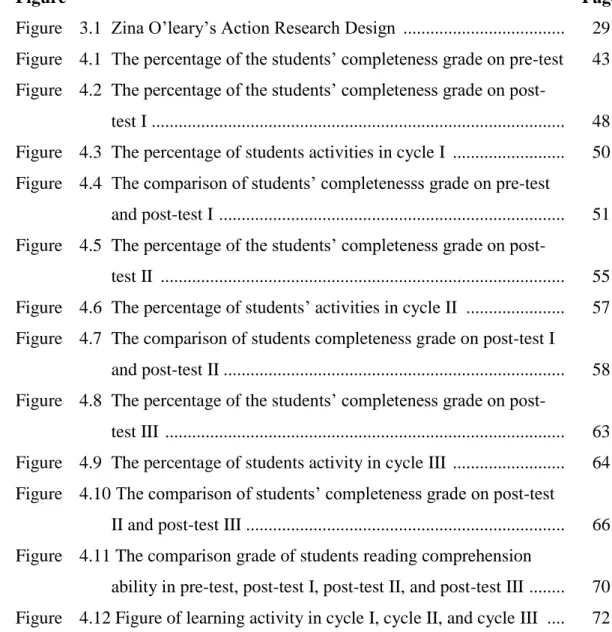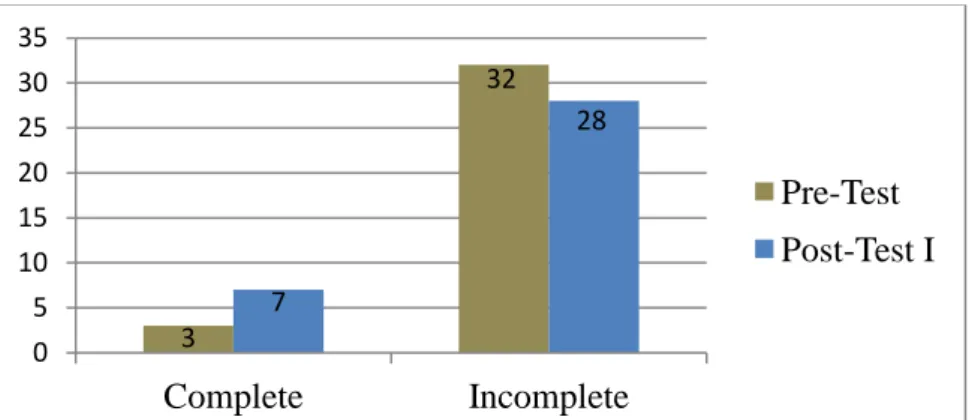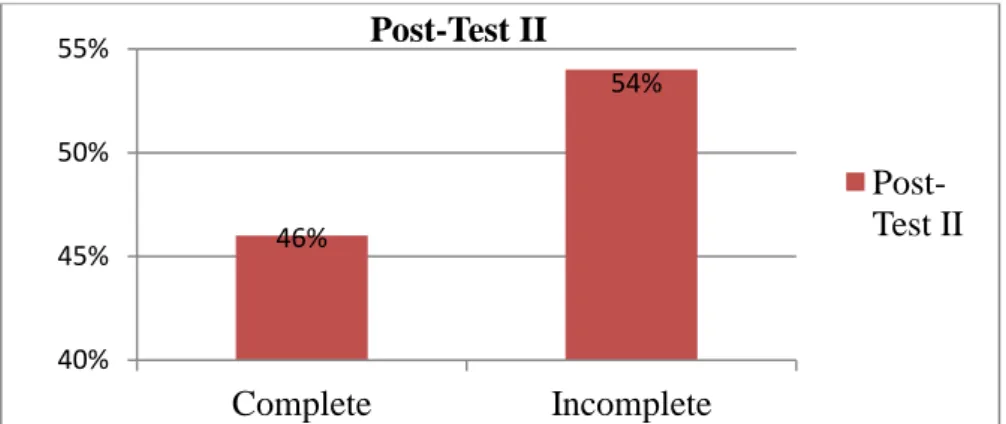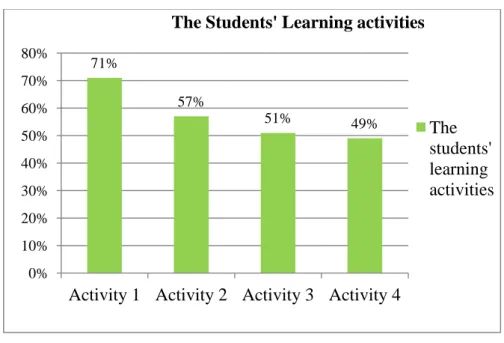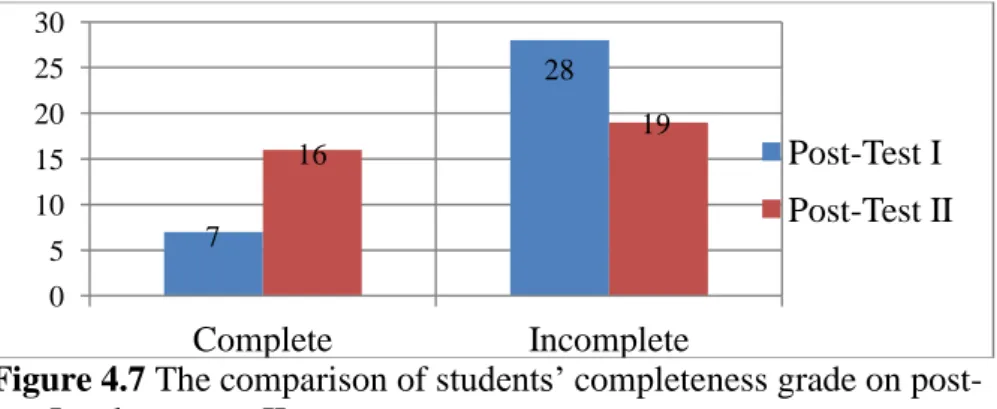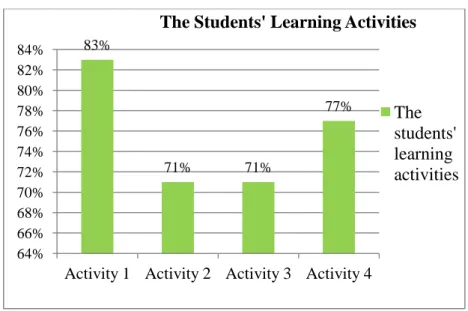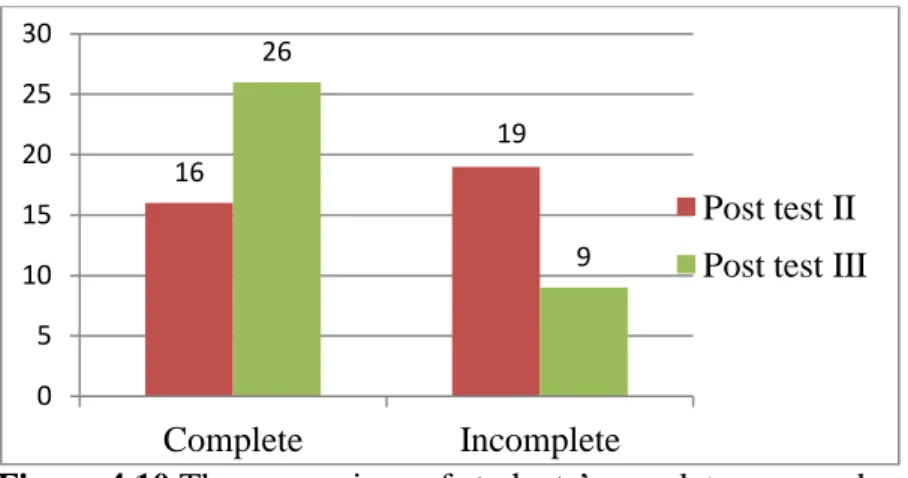The purpose of this research is to show that the use of Free Voluntary Reading (FVR) strategy can improve the students' reading comprehension ability and learning activity among the tenth graders of MA Baitussalam Miftahul Jannah Terbanggi Subing Central Lampung in the academic year of 2019/2020 improve. Finally, the result of this research proves that the use of FVR strategy can improve the students' reading comprehension ability. Moreover, the result of the post-test III proves that the percentage of students' learning activity is 77%.
Therefore, it is concluded that the use of FVR strategy can improve students' reading comprehension ability and their learning activity.
حارشنلإا,
Indeed, with hardship (will be) ease
Al-insyirah, 6)
Problem Identification
Problem Limitation
Problem Formulation
Objective and Benefits of Study 1. Objective of The Study
- Benefits of the Study
Free Voluntary Reading (FVR) strategy among tenth graders at MA Baitussalam Miftahul Jannah Terbanggi Subing Central Lampung during the academic year. This research is useful for students to create more enjoyable and meaningful learning. To provide information to English teachers, especially in MA Baitussalam Miftahul Jannah Terbanggi Subing Central Lampung, that the Free Voluntary Reading (FVR) strategy can be an experience for the teacher to use in teaching reading comprehension skills.
Other researchers can obtain tangible evidence of how to improve reading comprehension skills using the Free Voluntary Reading (FVR) strategy.
Prior Research
- The Concept of Reading Comprehension a. Definition of Reading Comprehension
- Concept of Free Voluntary Reading (FVR) Strategy
- The Implementation of Free Voluntary Reading (FVR) Strategy in Teaching Reading Comprehension Ability Teaching Reading Comprehension Ability
2Hyung-Ji Chang "The Effect of Free Voluntary Reading on College English Reading Class in Korea," Proceedings of the 16th Conference of Pan-Pacific Association of Applied Linguistics. In other words, FVR strategy helps the students in the process of reading from the beginning to the end of the reading process. The Implementation of Free Voluntary Reading (FVR) Strategy in Teaching Reading Comprehension Ability Teaching Reading Comprehension Ability Teaching Reading Comprehension Ability.
Krashen, the implementation of the Free Voluntary Reading (FVR) strategy in teaching reading is as follows:18.
Action Hypothesis
Variable and Operational Definition of Variable
The researcher uses an objective test with multiple choice tests that consist of 20 items related to reading comprehension ability. It can be defined as the students' knowledge in recognizing the text, such as: main idea, theme and others. The researcher gave 1 score for each item and calculated the score obtained by dividing the total number of correct answers by the number of exercises and multiplying by 100, so that the lowest score is 0 and the highest score is 100.
The students are able to understand the main idea, topic of the passage and answer the question well.
Research Location
Subject of Study
Action Plan
- Classroom Action Research
- The Steps of Research
Action research in the classroom has different models, but in this research the researcher used the action research design by Zina O'leary. In this case, the researcher conducted classroom action research in the tenth grade class of MA Baitussalam Miftahul Jannah Terbanggi Subing Central Lampung. The reason why the researcher conducted classroom action research is because the researcher wanted to improve the reading comprehension ability of the tenth grade student in MA Baitussalam Miftahul Jannah Terbanggi Subing.
From the observation sheet, the researcher and the collaborator know the result of the student's learning activities.
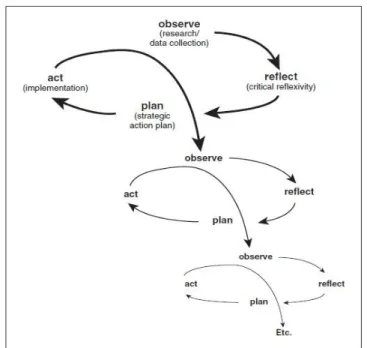
Data Collecting Techniques
The researcher and collaborator reflect all the acting performed and identify the result of observation in the learning process by comparing the score of pre-test and post-test. The pre-test is given in the first meeting before treatments are done to know the understanding of the students before the action research is done. The post-test is given in the last meeting after treatments have been done to find out whether the treatments made any contribution to the students' performance in class or not.
Therefore, the researcher was able to see the students' progress in their reading comprehension ability.
Data Analysis Technique
- Description of Research Location
- Description of The Research Data
Therefore, the researcher used Free Voluntary Reading (FVR) strategy to improve students' reading comprehension ability. The researcher also planned to provide evaluation to measure students' mastery of the given materials. The result of the students' test in post-test I was better than test in pre-test before.
Source: The students' reading grade post-test 1 at the tenth graders of MA Baitussalam Miftahul Jannah Terbanggi Subing Central Lampung 21 August 2019. Source: The students' learning activities at the tenth grade of MA Baitussalam Miftahul Jannah on 20 August 2019. Sixth, one of the students who achieved the highest score in their group based on the post-test.
The test score of the students in the post-test II was better than the test in the post-test I before that. Source: Student assessment of Post-Test II reading by tenth graders of MA Baitussalam Miftahul Jannah Terbanggi Subing Central Lampung on September 4, 2019. Source: Student learning activity of tenth graders of MA Baitussalam Miftahul Jannah Central Lampung on September 03, 2019.
Source: Students' grade for reading after test III of the tenth graders at MA Baitussalam Miftahul Jannah Terbanggi Subing Central Lampung on September 18, 2019. From the table above, it could be seen that students' scores in post-test III were different.
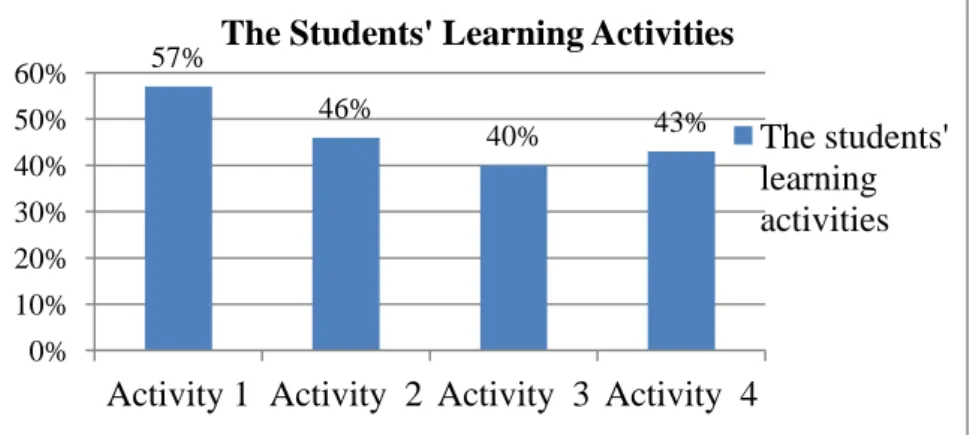
Discussion
The result of students' learning activities in I., II. and III. cycle can be improved. Pupils' learning activity following the teacher's explanation can be improved by 57% in cycle I, 71% in cycle II. cycle becomes 83% in III. Students' ability to ask/answer questions can improve from 46% in cycle I, 57% in cycle II. cycle becomes 71% in III.
The students' learning activities in class can be improved from 40% in cycle I, 51% in cycle II to 71% in cycle III. The students' ability to perform the task can be improved from 43% in cycle I, 49% in cycle II to 77% in cycle III.
Interpretation
- Result of Students Learning
- The Result of Students’ Learning Activities in Cycle I, Cycle II and Cycle III Cycle III
In this research, to know the students' reading comprehension ability after the implementation of the treatment, the researcher conducted the post-test I. In this phase, the researcher continued with cycle II because the grade of post-test I in cycle I was not at the pass grade, yet only 46% passed the pass grade. The researcher offered the post-test II to measure the students' reading comprehension ability after the implementation of the treatment.
At this stage, the examiner continued with Cycle III because the post-test II grade in Cycle II had not yet met the pass, but only 46% passed the pass. The researcher presented the post-test III to measure the students' reading comprehension after implementation of the treatment. Comparison of the grade in Pre-Test, Post-Test I, Post-Test II and Post-Test III Post-Test III Post-Test III.
The comparison of students' grades in Pre-Test, Post-Test I, Post-Test II, and Post-Test III. Based on the result of the pre-test, post-test I, post-test II and post-test III, it was known that there was a positive significant improvement in the students' grade. It is supported by the students' improved grade from pre-test to post-test I, post-test I to post-test II, and from post-test II to post-test III.
The result of the students' learning activities in cycle I, cycle II and cycle III cycle III cycle III. The percentage of student progress in being active in class from cycle I to cycle II.
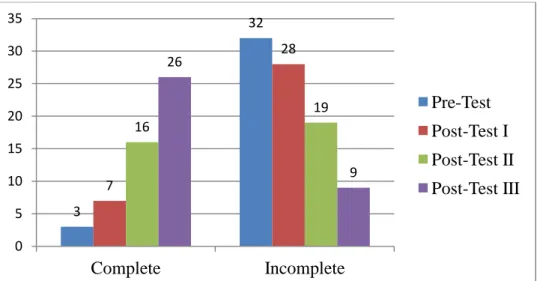
Suggestion
Analisis fungsi sosial, struktur teks, dan unsur kebahasaan teks presentasi identitas sesuai dengan konteks penggunaannya. Menyusun teks lisan dan tulis sederhana untuk mendeskripsikan, menanyakan, dan menanggapi pengungkapan diri, dengan memperhatikan fungsi sosial, struktur teks, dan unsur kebahasaan, secara benar dan sesuai dengan konteks. Siswa menerima umpan balik dari guru dan teman tentang fungsi sosial dan unsur bahasa.
Menyusun teks lisan dan tulis untuk melafalkan dan menanggapi pujian dengan sayap, dengan memperhatikan fungsi sosial, struktur teks, dan unsur kebahasaan yang benar dan sesuai konteks. Dengan menganalisis fungsi sosial, struktur teks, dan unsur kebahasaan pada ungkapan menunjukkan kepedulian, serta reaksi, sesuai dengan konteks penggunaannya. Dengan bimbingan dan arahan guru, siswa mengidentifikasi ciri-ciri interaksi yang menunjukkan perhatian. fungsi sosial, struktur teks, dan unsur kebahasaan).
Ketepatan dan ketepatan penggunaan unsur struktur dan linguistik dalam menyampaikan ucapan selamat bersayap dan tanggapannya. Menyunting teks deskriptif lisan dan tulis sederhana tentang orang, tempat wisata dan bangunan bersejarah terkenal, dengan memperhatikan fungsi sosial, struktur dan unsur teks. Siswa menyampaikan laporan tertulis dengan memperhatikan fungsi, struktur, dan unsur kebahasaan masyarakat yang benar dan sesuai dengan konteks.
Analisis fungsi sosial, struktur teks, dan unsur kebahasaan dalam teks naratif sederhana berbentuk cerita rakyat, sesuai dengan konteks penggunaannya. Siswa secara berkelompok menulis/menyalin teks recount dengan memperhatikan fungsi sosial, struktur, dan unsur kebahasaan secara runtut.
Kompetensi Inti (KI)
Tujuan Pembelajaran
Pembelajaran 1. Fungsi sosial
- Struktur teks
- Unsur kebahasaan
- Topik
- Identification
- Description
Saat menulis teks deskriptif, yang perlu kita ketahui adalah bagaimana kita menyampaikan deskripsi tertulis kita.
Strategy
Media dan Sumber Belajar Lembar Kerja (Instrument)
Teknik penilaian
- Indikator, teknik, bentuk dan contoh
- Instrument : Terlampir
- Kompetensi Inti (KI)
KI-2 : Menghargai dan menjunjung tinggi perilaku jujur, disiplin, peduli (toleransi, gotong royong), santun, percaya diri dalam interaksi efektif dengan lingkungan sosial dan alam dalam mencapai kebersamaan dan eksistensi. KI-3 (Pengetahuan): Memahami, menerapkan, menganalisis pengetahuan faktual, konseptual, dan prosedural berdasarkan rasa ingin tahunya tentang ilmu pengetahuan, seni, teknologi, budaya, dan humaniora dengan wawasan kemanusiaan, kebangsaan, kenegaraan, dan peradaban terkait penyebab fenomena dan kejadian. , serta penerapan pengetahuan prosedural pada bidang studi tertentu sesuai dengan bakat dan minatnya dalam memecahkan masalah.
Tujuan Pembelajaran
Pembelajaran 5. Fungsi sosial
- Struktur teks
- Topik
- Identification
- Description
Strategy
Media dan Sumber Belajar Lembar Kerja (Instrument)
Teknik penilaian
- Indikator, teknik, bentuk dan contoh
- Instrument : Terlampir
- Rubrik Penilaian
Kompetensi Inti (KI)
Tujuan Pembelajaran
Pembelajaran 9. Fungsi sosial
- Struktur teks
- Topik
- Description
Strategy
- Media dan Sumber Belajar Lembar Kerja (Instrument)
Kegiatan Pembelajaran
- Teknik penilaian
- Indikator, teknik, bentuk dan contoh
- Instrument : Terlampir
- Rubrik Penilaian
- Choose the correct answer, write only a, b, c, d, or e for each answer!
- What are the facilities available at the Natural Bridge National Park?
- What visitors will see if they come to the cave at night?
- What is the text purpose?
- Which one is NOT TRUE about the malaria based on the text?
- Where is place preferred by malaria mosquitoes, EXCEPT?
- What is the text purpose?
- Why did Petruk cave named as one of character in Punokawan puppet?
- Which part of Petruk Cave which used for place to put foods for ancestor?
- What is stalactites means?
- What is “lead” means in paragraph 2?
- What is the main idea of the passage?
- What does paragraph 2 talks about?
- What does “it” in the first paragraph line three refer to?
- Where is the location of Petruk Cave?
- What does the text tell you about?
- Write your name and class!
- Read the text carefully!
- Choose the correct answer, write only a, b, c, d, or e for each answer!
- The Hobbit is a movie which is based on a book whose author is .…
- Look at paragraph 1 and answer the blank based on the multiple choices
- If The Lord of The Ring takes place on 1150, when will probably The Hobbit
- What did the Wizard want Bilbo to do in the movie?
- The role of the dwarves’ leader is played by?
- How many people that lined in the red carpet on the first premiered The
- What is the communicative purpose of the text?
- What is the purpose of the text?
- What type of the text is used by writer?
- What does “they” in a paragraph 2?
- Which one creates Jellyfish’s light?
- Which one is TRUE about the Jellyfish based on the text?
- Look at paragraph 2 and answer the blank based on the multiple choices
- What is the main idea of the last paragraph?
- What is the synonym of “unlike”?
- What is the meaning of invertebrate animal?
- What is the topic about?
- The appropriate title of the text above is
- When was the bridge opened?
- Which statement is not true according to the text?
- Where is the statement based on the last paragraph, EXCEPT?
- The synonym of “direction” in the third paragraph is …
- Write your name and class!
- Read the text carefully!
- Choose the correct answer, write only a, b, c, d, or e for each answer!
- What type of the text is used by the writer?
- Because of the topography of the region, Kediri is called …
- There is a big river called …. Cutting off the center of the town
- Look at the paragraph 1 and answer the blank based on multiple choices
- Look at the last paragraph and answer the blank based on multiple choices
- Which line tells us that most of people died?
- Where did the Titanic sink exactly?
- What causes the titanic ship to sink?
- What is the total number of passengers at the time?
- What is the topic of the text?
- Which of the following statement is not true about Peter?
- According to the passage, we know that Peter is…
- From the text, we may conclude that…
- What does the text tell you about?
- What is the topic above?
- What makes Bale Kambang famous?
- What is “Wayang” mean in paragraph 2?
- What does “it” in the first paragraph line three refer to?
- Write your name and class!
- Read the text carefully!
- Choose the correct answer, write only a, b, c, d, or e for each answer!
- London consists of …
- Where is Kapoposang located?
- Kapoposang is one of the largest of the Spermonde Islands, around 70 km
- What will be seen if you approach the island of Kappoesang, EXCEPT?
- How long does it take to get to Kappoesang Island?
- What is the topic about …
- Look at paragraph 1 and answer the blank based on the multiple choices
- Look at paragraph 1 and answer the blank based on the multiple choices
- Who is coach of Kaka?
- What is the main idea of the text?
- Where is Losari beach located?
- Look at paragraph 2 and answer the blank based on the multiple choices
- Look at paragraph 1 and answer the blank based on the multiple choices
- The statements below are not true …
We must make mosquito cattle 22. the government is trying to free them. the whole country from the disease, and it will certainly succeed if people cooperate.”. Condition in Petrukhulen b. Location of Petruk Cave approx. What does "it" in the first paragraph, line three refer to. It has been known as the "Queen of the Adriatic", the "City of Bridges" and the "City of Light".
It is known as the "Queen of the Adriatic Sea", "City of Bridges" and "The City of Light". The groups formed by Kaka, Ronaldinho, Ronaldo and Adriano were called "the Magic Square" by Brazilian media fans.
ANALYSIS INSTRUMENT 2 OF READING COMPREHENSION
ANALYSIS INSTRUMENT 3 OF READING COMPREHENSION
